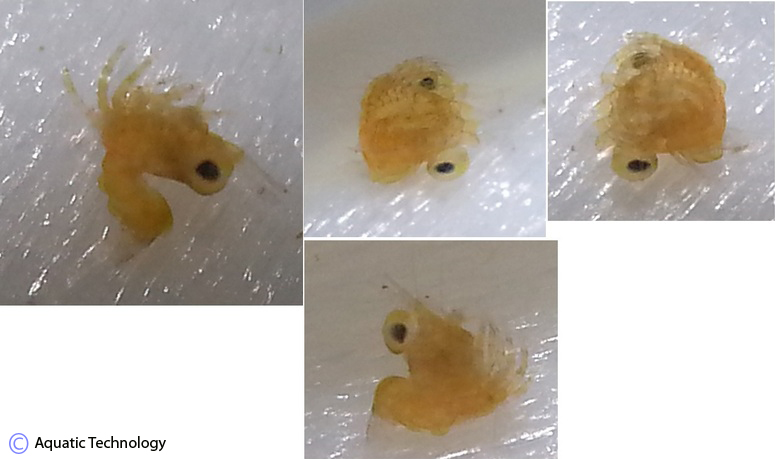 Aquatic Technology of Ohio and the Columbus Zoo started the journey of culturing Hymenocera elegans back in May of 2015. The Columbus zoo had early success on a small scale and succeeded in raising 50 plus individuals from 2 batches to settlement.
Aquatic Technology of Ohio and the Columbus Zoo started the journey of culturing Hymenocera elegans back in May of 2015. The Columbus zoo had early success on a small scale and succeeded in raising 50 plus individuals from 2 batches to settlement.
As with many aquaculture ventures, they had to overcome obstacles like larval feed types, cannibalism and pests. By December of 2016, Aquatic Technology succeeded in getting a substantial number of larvae to settlement. At one point, prior to settlement, larvae were consuming nearly 50,000 parvocalanus copepods daily. After they settled the juveniles were switched to Asterinas and then to Chocolate Chip Stars. Aquatic Technology is currently working on getting them on an alternative proprietary food. This has been a triumphant success not only for the Columbus Zoo and Aquatic Technology of Ohio, but for culturing popular ornamental shrimp overall.

The Harlequin Shrimp (Hymenocera elegans) can be found on reefs throughout the Indo-Pacific. They are popular in the aquarium trade because of their cartoonish, elaborate carapace and oversized, paddle-like claws.
For those of you who consider Asterina stars a pest (as many do) the Harlequin Shrimp will make quick work to reduce them to substantial populations. However, as obligate sea star eaters, they won’t stop at Asterina stars, likely consuming any other sea star they can find. With large, very durable sea stars, the star will likely survive this behavior, however, sensitive stars like those kept in most aquariums will eventually succumb to the constant picking.
Hymenocera elegans remain relatively small (3” or less), are peaceful and easy to care for as long as a steady diet of sea stars (and the occasional urchin) are supplied. Pairs can be kept in the same aquarium as long as there is adequate space, as these shrimp can be territorial. Provide tank mates that are peaceful and not known invert eaters.
Earlier today I spoke with Greg Smith from Aquatic Technology and they have created a prepared food to feed the shrimp that contains various ingredients, including bits of previously frozen starfish and other proteins. Greg tells us that some people in the past have had success weening these shrimp off of the starfish diet but to date, however he is still including starfish in their diet. The captive bred shrimp are now available from Quality Marine but retailers may contact Aquatic Technology for availability.
For more information about captive bred marine animals please visit the Marine Breeding Initiative Facebook page.





